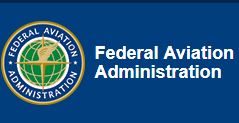The Federal Aviation Administration (FAA) has revised its unmanned aircraft systems (UAS) safety risk management (SRM) policy that addresses safety risks in the National Airspace System. The policy provides information regarding hazards, safety risks, and safety risk controls to UAS decision-makers.
The policy sets out how safety risk management assessments are performed and defines the roles of agency personnel responsible for UAS safety management. It also describes the duties of the FAA Air Traffic Organisation (ATO) when handling waivers.
According to the FAA, the UAS industry has experienced exponential growth as demonstrated 1-1 09/01/23 8040.6A by the number of drone registrations, airspace authorizations, waivers, and certificated remote pilots, and continues to grow. The regulatory system is striving to keep up with the pace of UAS technology and the unique nature of hazards and mitigations in these operations.
The new policy establishes the SRM process for UAS requests and provides a generalized list of common hazards and possible mitigations that should be considered with each applicable assessment. The SRM process is scalable to establish a new national policy or by an individual assessing a waiver. It focuses on hazards that expose persons or property to harm or damage, within the NAS or on the ground, while the UAS is prepared for flight and during UAS operations. Ensuring hazards are identified and sufficient mitigations are in place helps ensure the safety of individuals involved in flight operations, as well as nonparticipants on the ground and in the air.
According to Ain Online, specific updates to the previous national policy order published in October 2019 adds and clarifies general terms and definitions; updates recommended training required before an FAA official is permitted to be on a UAS safety panel; modifies descriptions for the severity level of UAS safety occurrences; adds a safety matrix focused on quantitative assessments; clarifies safety action triggers, governance, and triage steps; and updated roles and responsibilities between the FAA’s aviation safety office and ATO.
Access the policy here
For more information visit:




